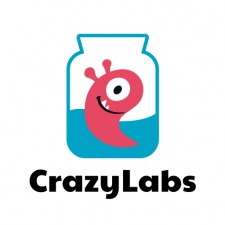If 2020 was the year you decided to go into hypercasual game development, keep reading - we got some interesting numbers for you. CrazyLabs’ Publishing team confirmed they have received pitches and prototypes during 2020 like never before, from an ever-growing number of studios (are you one of them?).
Since the majority of hypercasual players are non-gamers, looking for fun and quick-to-play games, hypercasual as a genre has become more and more dominant in the past year. But how do you get the attention of these players? And more importantly, how do you catch the eye of the top publishers?
Enter Crikey from Sydney, Australia, the studio behind Phone Case DIY. "We had this idea for a game in which you can design your own phone case,” says Sheetal Bairamadgi, the Founder of Crikey Games.
“The trend was out there, going viral in social media, with countless views in TikTok and YouTube. We knew we had to gamify the trend and identify what’s the one thing people loved about those videos. That’s when we decided to look for a publisher that can help us do just that”.

After identifying which publishers have the right expertise, Crikey chose CrazyLabs and submitted their initial gameplay video. Sheetal confirms: “We saw what they did with Tie Dye and Acrylic Nails, both titles that have crossed 70 million downloads by now. We knew they had the know-how and manpower needed to turn Phone Case DIY into a #1 hypercasual game.”
“We loved what we got from Crikey'', says Rotem Eldor, Senior Publishing Manager at CrazyLabs. “It had the basics: it was based on a trend, it had the potential to go viral, and most of all - it took you no more than 3 seconds to start playing. We contacted Crikey, and decided to move to the next phase - the marketability test”.
In hypercasual, you first check the potential of the game. Since making a game video is faster than creating a build for the app stores, gaming studios will first create a gameplay video and test it. The general benchmark for the initial marketability test, also known as the CTR test, is 3-4 per cent. If your gameplay video scores less, publishers will tell you to chuck it and move on to the next game idea.
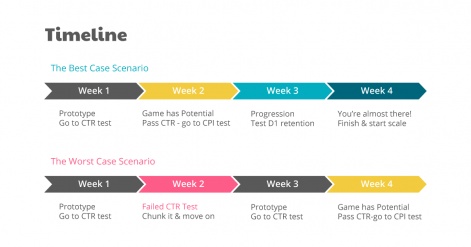
“Phone Case DIY got 3.4 per cent in the CTR test. At that point, we thought it was too low”, Sheetal recalls.
“CrazyLabs surprised us in that sense. The CPC was only $0.13, lower than anyone expected, and their team explained to us that there’s a sweet spot between CTR and CPC - a gentle balance that shows whether the game is worth it or not. The low CPC caught their eye, and here’s where the difference from other publishers became abundantly clear. Their previous experience with other simulation games meant they knew what needed to be done in order to turn Phone Case DIY to a success.”
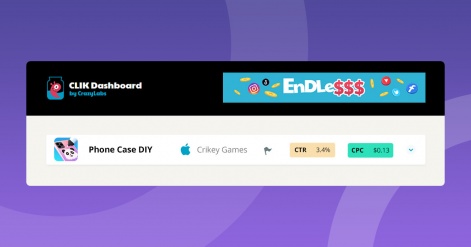
“One of the main things we learned in the process was how important it is to work fast, and iterate faster”, says Sheetal. ”It’s amazing how much you learn from the first marketability tests, especially when the entire testing process is transparent and can be monitored all the time. The work with CrazyLabs, and with CrazyLabs CLIK Dashboard, was invaluable. It kept us focused only on the features that will improve the gaming experience. Only then did we start pushing for a build that can pass the CPI test.”
Another important milestone for any studio is the retention: your game needs to be highly replayable. If players aren’t coming back - you have a problem, and it might be fatal.
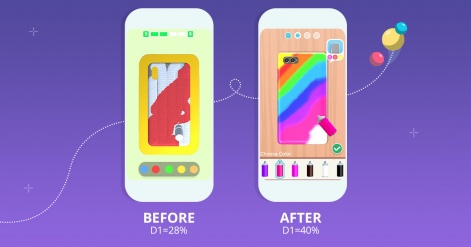
“In the past year we expanded our Growth and LiveOps team significantly”, shares Rotem from CrazyLabs. “Now we support our partners in more verticals, and make sure their games are highly replayable from the get go.”
“You can see the changes in the UI/UX, the gaming experience, the design. There was also an upgrade to the entire technical layer of the game, with a lot of development work invested”, points out Sheetal. “CrazyLabs provided us with the skills the game needed. The improvement was truly remarkable, we were ecstatic to see the retention numbers jump up, and beyond the moon when Phone Case DIY hit the #1 spot!”
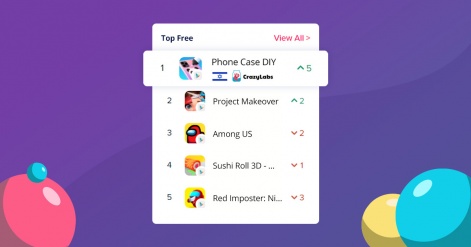
“We are in the midst of an incredible journey” Sheetal from Crikey finishes, “but if there’s one tip I can offer fellow game developers looking for a publisher, it would be to listen carefully to the publishing manager working with you on your title. The feedback from him or her can make or break your game. Publishing managers are exposed to a crazy amount of hypercasual prototypes, ideas and tests on a daily basis, all while working with multiple teams around the world. They have a bird’s view of the hypercasual gaming industry, something that a gaming studio can be completely oblivious to. Publishing managers are like thermometers, and in my eyes - they are modern-day oracles.”

